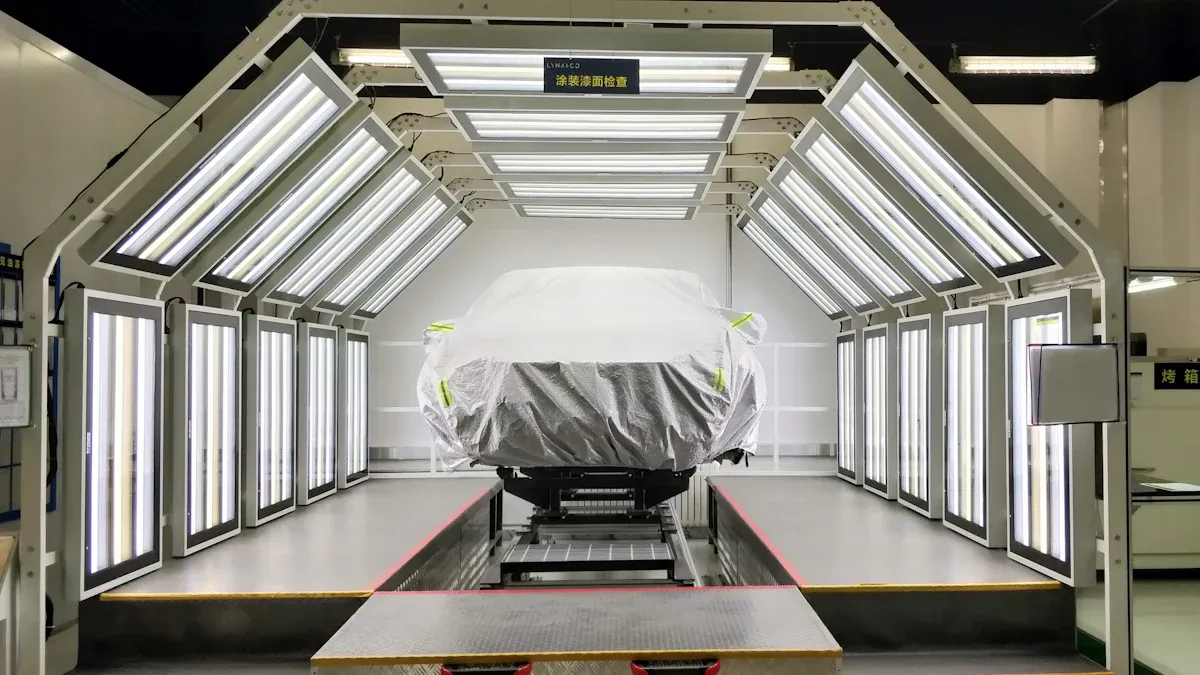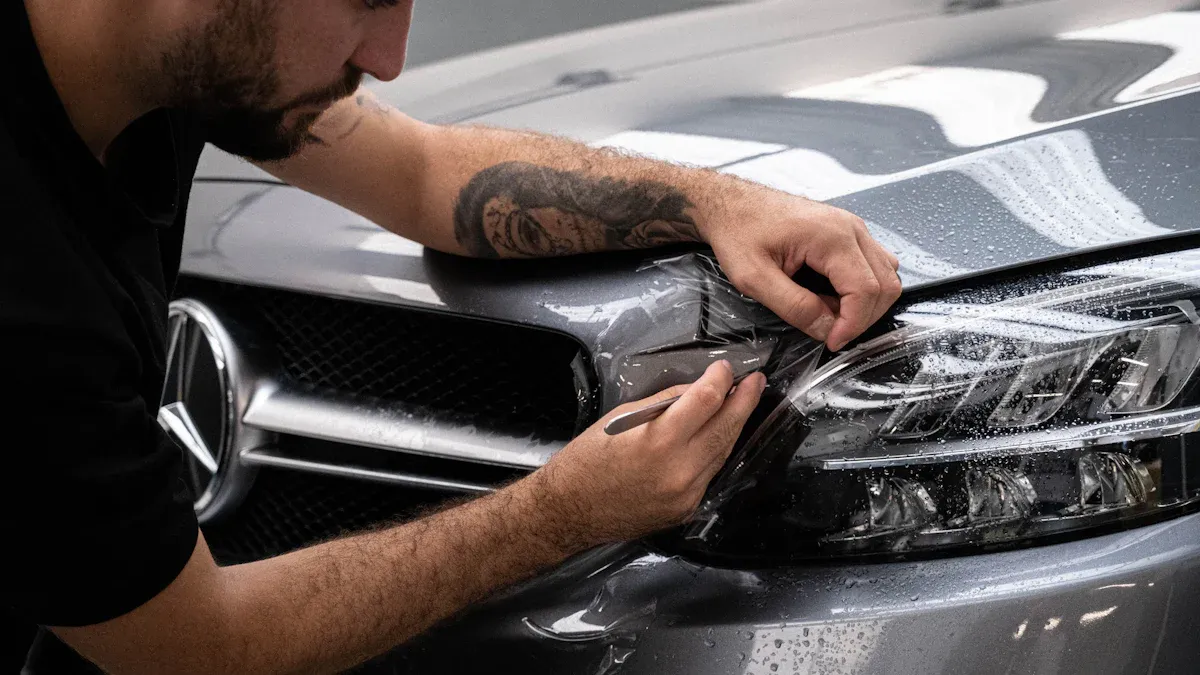
Automotive components face extreme conditions daily. You encounter challenges like wear, high temperatures, and corrosion. TAC Coating offers a solution through advanced technology. Its resistance to damage ensures longer-lasting parts. Compared to traditional options like sic Coating, TAC Coating provides superior durability and efficiency. This innovation transforms manufacturing.
Key Takeaways
- TAC Coating makes car parts stronger and less likely to break. This helps parts last longer and need fewer changes.
- TAC Coating saves money by making parts last longer and using less energy, which helps save over time.
- TAC Coating helps the environment by cutting waste and needing fewer replacements, making the car industry greener.
The Biggest Challenges in Automotive Component Manufacturing
Wear and Tear on Components
Automotive components face constant stress during operation. Friction, impact, and exposure to harsh conditions wear down parts over time. This leads to frequent replacements and increased maintenance costs. You need solutions that enhance durability and reduce wear. TAC Coating offers advanced protection against these challenges. Its resistance to abrasion ensures components last longer, even in demanding environments.
Rising Costs and the Need for Efficiency
Manufacturing costs continue to rise due to material expenses and labor demands. You must find ways to optimize production without sacrificing quality. Efficient processes and durable materials can reduce overall costs. TAC Coating contributes to this by extending the lifespan of components. Fewer replacements mean lower expenses and improved efficiency in the long run.
Performance Demands in Modern Vehicles
Modern vehicles require high-performance components to meet consumer expectations. Engines, brakes, and other systems must operate reliably under extreme conditions. You need materials that can handle heat, pressure, and speed without failing. TAC Coating enhances performance by providing superior thermal and mechanical stability. It ensures components function optimally, even in high-stress environments.
Environmental and Sustainability Concerns
Sustainability is a growing priority in automotive manufacturing. You must address environmental concerns while maintaining product quality. Reducing waste and using eco-friendly materials are key goals. TAC Coating supports these efforts by minimizing the need for replacements. Its durability reduces material waste, contributing to a more sustainable manufacturing process.
What is TAC Coating and Why Does It Matter?
Definition and Composition of TAC Coating
TAC Coating stands for "Titanium Aluminum Carbon Coating." It is a thin, protective layer applied to automotive components. This coating combines titanium, aluminum, and carbon to create a durable surface. The unique composition gives it exceptional strength and resistance to wear. You can think of it as a shield that protects parts from damage caused by friction, heat, and corrosion. Manufacturers apply TAC Coating using advanced techniques like physical vapor deposition (PVD). This ensures a uniform layer that adheres tightly to the component’s surface.
Key Properties of TAC Coating
TAC Coating offers several key properties that make it valuable in automotive manufacturing. It resists wear and abrasion, which helps components last longer. Its high thermal stability allows it to perform well in extreme temperatures. You will also find that it provides excellent corrosion resistance, even in harsh environments. Another important feature is its low friction coefficient. This reduces energy loss and improves the efficiency of moving parts. These properties make TAC Coating a reliable choice for high-performance applications.
How TAC Coating Differs from Traditional Coatings
Traditional coatings, like chrome or nickel plating, often lack the durability needed for modern automotive demands. TAC Coating stands out because of its advanced composition and superior performance. Unlike traditional options, it can withstand higher temperatures and more intense wear. You will notice that it also offers better environmental benefits. Its application process produces less waste, aligning with sustainability goals. By choosing TAC Coating, manufacturers gain a solution that outperforms older technologies in every aspect.
How TAC Coating Addresses Automotive Manufacturing Challenges

Enhancing Durability and Reducing Wear
You know that wear and tear are inevitable in automotive components. However, TAC Coating provides a game-changing solution. Its unique composition creates a hard, protective layer that resists abrasion and friction. This means parts like gears, pistons, and bearings can withstand constant stress without degrading quickly. By using TAC Coating, you can extend the lifespan of these components, reducing the need for frequent replacements. This durability ensures your vehicles remain reliable even under demanding conditions.
Lowering Costs Through Longevity and Efficiency
Frequent part replacements and maintenance can strain your budget. TAC Coating helps you save money by increasing the longevity of automotive components. When parts last longer, you spend less on replacements and repairs. Additionally, the coating’s low friction properties improve energy efficiency in moving parts. This reduces fuel consumption and operational costs. By investing in TAC Coating, you achieve long-term savings while maintaining high-quality performance.
Improving Performance in High-Stress Environments
Modern vehicles operate in extreme conditions, from high temperatures to intense pressure. TAC Coating enhances the performance of components in these environments. Its thermal stability ensures parts function optimally even under extreme heat. You’ll also notice improved mechanical strength, which allows components to handle heavy loads without failure. Whether it’s a high-performance engine or a braking system, TAC Coating ensures reliable operation when it matters most.
Supporting Sustainability Goals and Reducing Environmental Impact
Sustainability is a priority in today’s automotive industry. TAC Coating supports your eco-friendly goals by reducing waste. Its durability minimizes the need for frequent replacements, which lowers material consumption. The coating’s application process also generates less waste compared to traditional methods. By choosing TAC Coating, you contribute to a greener manufacturing process while maintaining product quality.
Real-World Applications of TAC Coating in the Automotive Industry

Case Study: TAC Coating in High-Performance Engine Components
You know how critical engine components are for vehicle performance. These parts endure extreme heat and friction, which can lead to wear and failure. TAC Coating has proven to be a game-changer in this area. For example, manufacturers have applied it to pistons and camshafts in high-performance engines. The coating’s thermal stability and low friction properties reduce heat buildup. This improves efficiency and extends the lifespan of these components. As a result, vehicles equipped with TAC Coating-enhanced engines deliver better performance and reliability.
Case Study: TAC Coating for Corrosion-Resistant Automotive Parts
Corrosion is a major issue for automotive parts exposed to moisture and chemicals. You’ve likely seen how rust can weaken components over time. TAC Coating provides a robust solution by creating a protective barrier against corrosive elements. In one case, manufacturers used it on exhaust systems and undercarriage parts. The results showed significantly reduced corrosion, even in harsh environments. This not only improved the durability of the parts but also reduced maintenance costs for vehicle owners.
Lessons Learned from TAC Coating Implementations
The use of TAC Coating in the automotive industry has taught valuable lessons. First, you can achieve significant cost savings by extending the lifespan of components. Second, the coating’s versatility allows it to be applied to a wide range of parts. Finally, adopting TAC Coating supports sustainability goals by reducing waste and material consumption. These insights highlight its potential to revolutionize automotive manufacturing.
TAC Coating offers a practical solution to the challenges in automotive manufacturing. You can rely on it to enhance durability, cut costs, and boost performance. Its eco-friendly properties also support sustainability goals. While more research will refine its applications, this technology already represents a major leap forward for the industry.
FAQ
What makes TAC Coating better than traditional coatings?
TAC Coating offers superior durability, heat resistance, and corrosion protection. Its advanced composition ensures longer-lasting components compared to traditional options like chrome or nickel plating.
Can TAC Coating be applied to all automotive parts?
You can apply TAC Coating to most metal components, including engine parts, exhaust systems, and undercarriage parts. Its versatility makes it suitable for various applications.
Tip: Consult with your manufacturer to confirm compatibility with specific materials.
Is TAC Coating environmentally friendly?
Yes! TAC Coating reduces waste by extending component lifespan. Its application process also generates less waste, supporting sustainability goals in automotive manufacturing. 🌱


